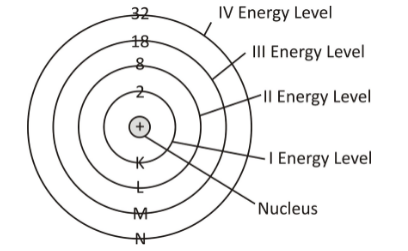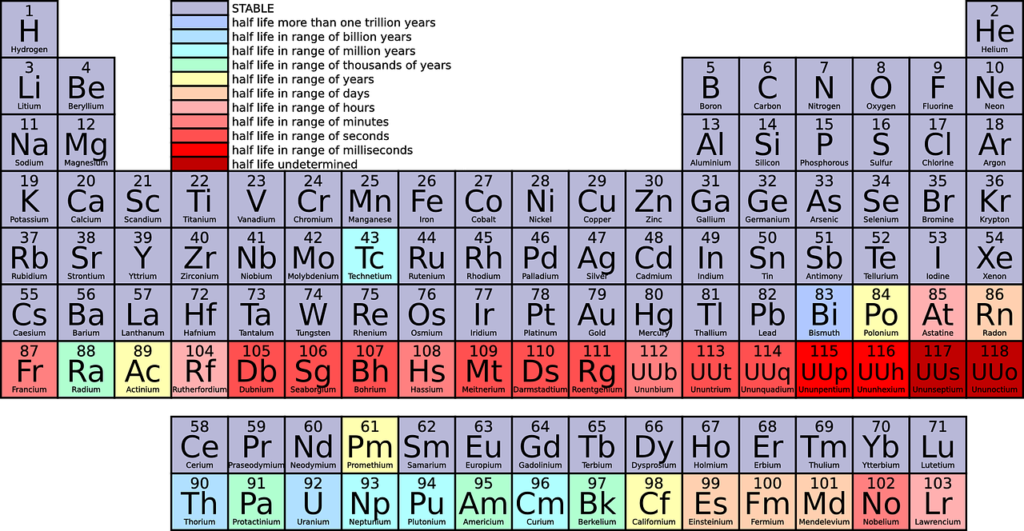Electronic configuration is essential to understand how atoms interact, create connections, and create the vast display of substances that exist in our universe. It describes how an atom’s electrons are arranged around its nucleus at particular energy levels, or “shells.” Since each element’s chemical characteristics are determined by this arrangement.

Electronic Configuration of Atoms and Basics of Electron Arrangement :-
Protons and neutrons stay in the nucleus of an atom, it is encircled by negatively charged electrons. Electrons are organised in different energy levels, or “shells,” that encircle the nucleus rather than floating around it at random. Energy of each of these shells varies; the energy of the shells nearer the nucleus is lower than that of the shells farther away.
Starting with the shell that is closest to the nucleus, the primary shells are designated by K, L, M, N, and so on. The formula 2n2, where n is the number of the shell, determines the maximum number of electrons that each shell can contain:
K (1st shell) can hold up to 2 electrons.
L (2nd shell) can hold up to 8 electrons.
M (3rd shell) can hold up to 18 electrons.
N (4th shell) can hold up to 32 electrons.
For example, the K shell contains the single electron that makes up hydrogen. With two electrons, helium occupies the K shell; elements with additional electrons begin to occupy the L, M, and N shells in corresponding fashion.

Subshells and Orbitals:
The idea of shells offers a primary framework for understanding electron organisation, it is actually more complex. The letters s, p, d, and f stand for the subshells that make up each shell. An orbital is a region of space where an electron is likely to be discovered, and each subshell has a specific number of orbitals.
s subshell has 1 orbital (can hold 2 electrons).
p subshell has 3 orbitals (can hold 6 electrons).
d subshell has 5 orbitals (can hold 10 electrons).
f subshell has 7 orbitals (can hold 14 electrons).
Aufbau Principle :- It is a basic rule in chemistry that guides the arrangement of electrons in an atom. The word “Aufbau” means “building up” in German, and the principle suggests that electrons fill atomic orbitals in order of increasing energy levels, starting from the lowest available orbital and moving to higher ones.
According to the Aufbau Principle, electrons occupy the following sequence of orbitals: 1s, 2s, 2p, 3s, 3p, 4s, 3d, 4p, and so on. This sequence is based on each orbital’s energy, not strictly on its distance from the nucleus. Lower energy orbitals fill first, creating a stable arrangement, and higher energy orbitals fill only after the lower ones are occupied.
This principle is accompanied by two other rules:
1.Pauli Exclusion Principle – There should not be two electrons in an atom can have the same set of quantum numbers, meaning each orbital can hold a maximum of two electrons with opposite spins.
2. Hund’s Rule – Within a subshell, electrons occupy separate orbitals singly before pairing up to minimise repulsion.
Aufbau Principle helps to predict electronic configurations and provides the chemical behavior of elements for helping to explain trends in the periodic table and bonding characteristics.

Writing Electronic Configurations
Electronic configuration of an atom is commonly expressed as a string of letters and numbers that stand for the atom’s shell, subshell, and electron count. For example-
Hydrogen (1 electron): 1s1
Helium (2 electrons): 1s2
Carbon (6 electrons): 1s2 2s2 2p2
Oxygen (8 electrons): 1s2 2s2 2p4